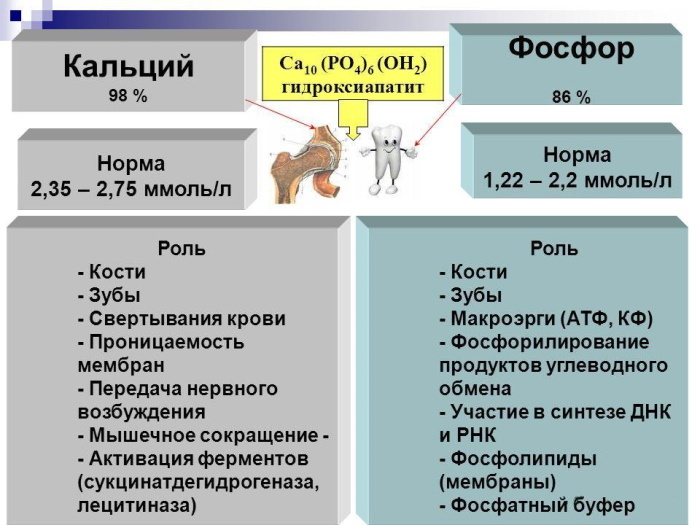This disease occurs when an adult is strongly lowered immunity. Laryngotracheitis in adults most often develops on the background of a severe cold. It is said that most of laryngotracheitis occurs in those people whose work is connected with oratorical activity - teachers, educators, presenters.

What it is?
Laryngotracheitis - a combined infectious-inflammatory disease that affects both the windpipe (trachea) and the larynx (laryngitis). Because of the imperfections of the immune system laryngotracheitis children get sick more often before the age of 6 years, but is not uncommon in adults laryngotracheitis.
The disease is dangerous because in the very beginning of his disease can be mistaken for ordinary acute respiratory viral infections.
Causes of acute laryngotracheitis
There are many reasons and prerequisites for the emergence of an acute laryngotracheitis. Almost always - is an infectious, viral or bacterial nature arise.
Acute laryngotracheitis occurs in the following diseases:
- parainfluenza;
- Flu;
- Adenovirus infection;
- ARI and ARI;
- Chlamydial infection;
- Staphylococcal infection;
- Chickenpox;
- Scarlet fever;
- Measles;
- Rubella;
- Syphilis;
- mycoplasmosis;
- Streptococcal infection;
- Tuberculosis of the larynx;
- Pneumococcal infection.
Laryngotracheitis occurs when the above types of diseases in the case of weakening of the immunity generally. Sometimes it may result only the larynx or trachea only. There are cases of acute laryngotracheitis for other reasons. For example, prerequisites for the disease may be allergic reactions himpreparatov organism or aggressiveness. Herpes lesions occur respiratory causes acute laryngotracheitis.
development mechanism
In this disease there is an inflammation air-conducting tube, whereby it swells the mucous membrane and the vocal cords. Narrowing of the airways leads to symptoms such as hoarseness and coughing.
Laryngotracheitis, as a result of an allergic reaction manifested quickly. Allergic component acting on the larynx and trachea, displaces from the cells of the immune system, special substances and fills the vacant place.
Classification
Vydelyut three forms of the disease:
- catarrhal, at which there is some swelling and redness in the area of the vocal cords and trachea.
- atrophic, there is a gradual atrophy in the mucosa area, due to which it loses its protective properties and inflamed. Often in smokers and workers of coal mines, the people working in dusty environments.
- hyperplastic, manifested sprawl areas or the entire area of the mucous in the trachea and larynx, as a result suffers from breathing and voice.
Distinguish acute and chronic laryngotracheitis. Acute laryngotracheitis divided into
- primary, which is detected for the first time,
- relapsing occurring repeatedly at neblagopriyanyh factors occurs colds or action.
Primary acute laryngotracheitis embodiment may have three currents:
- acutely occurring against the background of the existing ARD,
- sudden laryngotracheitis without signs of acute respiratory infections,
- gradually arises as a complication of colds.
Downstream acute laryngotracheitis can be continuous, or undulating.
Chronic laryngotracheitis occurs when the wrong treatment of acute or in the absence of his treatment. Often it occurs when a professional overvoltage ligaments.

evidence
Acute laryngotracheitis in children and adults is manifested by symptoms:
- pronounced symptoms of intoxication;
- sore throat that triggers a cough;
- barking cough (especially pronounced in children);
- sore throat;
- change voice. It becomes rough and hoarse. In more severe cases there is aphonia;
- violation of the respiratory function. A child or adult can be heard wheezing noises, shortness of breath;
- increase in body temperature. Typically, indexes do not exceed 38 degrees, but there are cases where the temperature can climb to high numbers.
Symptoms of acute laryngotracheitis
For acute laryngotracheitis is characterized by a rapid increase in symptoms. Severity of symptoms depends on the degree of tissue lesions of the larynx and trachea.
- Infiltrative-purulent abscess or laryngotracheitis, which is characterized by damage to be layers of mucosa, muscle, cartilage, characterized by a rise in temperature up to 38C - 39C.
- For catarrhal laryngotracheitis characterizing inner mucosal lesion, mucosal isolation discharge, characterized by the satisfactory condition of the patient, normal or slightly elevated temperature.
Acute laryngotracheitis accompanied by severe pain in the throat, difficulty when trying to take a sip of the liquid. The patient loses his appetite, he noted increased symptoms of intoxication, the state as a whole is much worse.
Also characteristic symptoms when laryngotracheitis are the voice changes. He becomes hoarse, rough, it loses its sonority. Laryngotracheitis accompanied by a dry, barking cough more often in the morning, at night. After coughing the patient feels pain in the sternum. Provoke a cough can take a deep breath, laugh, inhalation of cold, polluted air. Initially, the cough is dry, no sputum. As the disease cough, softens the appearance of sputum. Over time, the sputum becomes mucopurulent, abundant. At the same time marked pain, sore throat, constant discomfort when swallowing. Painful sensations arise when trying to speak, on the exhale, while inhaling. All changes are accompanied by a deterioration of general health.
A serious danger when laryngotracheitis represents laryngeal stenosis. When this phenomenon is completely or substantially stops the airflow into the lungs as a result of severe narrowing of the larynx.
Symptoms of chronic laryngotracheitis
Particular attention should be paid to cough. If acute laryngotracheitis it is episodic and paroxysmal, the chronic form of the disease cough is permanent. Moreover, the patient constantly feels a sense of discomfort in the throat and trachea, as well as frequent pain in the sternum. The constant feeling of not passing that grazed his throat, dry mouth, painful swallowing - this is an incomplete list of manifestations of chronic laryngotracheitis.
The most characteristic feature is the diagnostic dysphonia or disorder in a patient voice function. Dysphonia is varying the intensity of light "husky" to complete inability to speak. Attempts to produce sounds cause patient discomfort. Exacerbate this condition may be some climatic factors or the various hormonal changes. Especially severe dysphonia are in climacteric women during pregnancy or during menstruation. Such a condition can be both periodic and permanent.
Constant dysphonia shows different morphological changes in the structure of the vocal cords. If the patient's professional activity is connected with the need to constantly communicate and be on the people, the smallest change in the tone of voice may be their stressful factors. As a result, it violated the psychosomatic condition of the patient: sleep disturbance function, the constant nervous tension, depression or neurosis.

First aid
When laryngotracheitis is very important to assist ill before the doctor's visit. And it is not only in their own symptoms of the disease, but in a kind of psychological stress, which manifests itself in the infected person, especially a child.
- It should reassure the patient, since its high excitation frequency and may provoke recess spasmodic attacks.
- Be sure to provide a supply of fresh air in the room.
- In acute laryngospasm, causing asphyxia, immediately cause a gag reflex method available (for example, pressing the root of the tongue).
- Give the patient a warm drink - milk, stewed fruit, mineral water, better slightly alkaline composition. The milk can add a pinch of baking soda - this is very helpful in narrowing of the larynx.
- Humidity in the room where the sick, should be increased.
- Remove sharp attacks help warm foot bath (water temperature - 38-40 degrees). However, they can not do on the background of increased body temperature.
Diagnostics
The diagnosis is made based on the results of studying the patient's complaints, inspection or conduct some research. To determine the illness may need the following:
- study emitted from the respiratory tract secretions;
- results of urinalysis and blood;
- serological testing, which allows to determine the etiology of the virus, provoked the development of the disease.
An important part of diagnostics laryngotracheitis performs inspection procedure and the laryngeal region of the vocal cords. To this end, modern medicine involves the use of a special apparatus, X-ray or CT scan. In the chronic form of the disease the patient is prescribed a biopsy secretions in the respiratory tract to eliminate cancer. Only the results of all the research doctor can determine what to treat disease.
complications
Significant swelling and accumulation of mucus in the lumen of the larynx in acute laryngotracheitis can be a cause for the development of severe complications such as constrictive laryngotracheitis, or false croup.
Chronic laryngotracheitis, under certain circumstances, it may give impetus to the development of tracheitis, bronchitis, bronchiolitis and pneumonia. Furthermore, the constant irritation of the larynx and trachea may contribute to the appearance of benign or malignant tumors. Complications of hypertrophic laryngotracheitis may be the appearance of prolapse of the ventricle of the larynx or throat ulcers, the formation of cysts.

How to treat laryngotracheitis?
Usually, inflammation of the upper respiratory tract does not require the premises of an adult patient in a hospital (for Except stenotic laryngotracheitis), so more likely to use home treatment conditions:
- Eliminate all harmful factors that provoke the development of laryngotracheitis (prohibiting smoking, talk, drink, and have sharp, spicy, acidic foods);
- The patient recovered with a warm moist air of the room, give a lot of warm (but not hot and irritating) drinking (jellies, teas, fruit drinks);
- If the temperature goes subfebrile border (38 ° C), reduce its paracetamol, ibuprofen or other available in the building antipyretics;
- Make alkaline inhalation at home, and when the temperature drops or in chronic disease - invited the patient to visit a physiotherapy clinic office (inhalation, electrophoresis, UHF and etc.)
- Give expectorants and antitussives, antihistamines are used;
- The patient should not rush to prescribe antibiotics currently on your own, exactly as his parents when it comes to children. Laryngotracheitis, having a viral origin, they still do not respond, so the body these drugs unnecessarily. In general, antibacterial and antiviral treatment at home is under the supervision of a physician.
In chronic hypertrophic laryngotracheitis in cases of absence of effect from conservative therapy or threaten to neoplastic transformation process resorting to surgery intervention. Excision overgrown tissues, elimination of ventricular prolapse, removal of cysts produced via endoscopic microsurgical techniques.
Folk remedies
To achieve complete recovery at laryngotracheitis can usually for 7-10 days in compliance with the physician appointments and performing general recommendations, including the use of folk remedies:
- inhalations with soda;
- inhalation of vapor a cooked potato;
- inhalations with healing essential oils: fir, juniper, eucalyptus, tea tree oil.
Describes the medicinal properties of onion inhaled and decoctions of onion pulp. There curative anti-inflammatory effects of garlic and honey mixed with various herbs, roots, fruits and plants.
Positive effects have herb St. John's wort, rosemary, oregano, mother and stepmother, plantain leaves, mullein flowers and nettle, marshmallow root and licorice, fennel fruit. radish juice with honey, potato and beet juice, broth aniseed, carrot juice and milk, flocks of raisins and onions will help to return the voice and make breathing easier.

prevention
Prevention laringotraheita consists of a set of measures:
- breathing exercises;
- hardening from an early age;
- diet with the exception of acute, salty, sour, hot or cold food;
- compulsory exercise;
- prevention of SARS;
- prophylaxis of inflammatory processes of the larynx;
- exclude hypothermia;
- receiving immunomodulatory drugs.
If laryngotracheitis occurs in a natural way, without complications, the recovery occurs within a week. Do not engage in self healing process must be under the control of a physician.



